Romans practiced polytheism worshipping numerous deities, including their gods, adoption from Greek gods, and gods from numerous other city-states and provinces.
God Jupiter, Goddess Juno, and Minerva were the first three deities of ancient Rome and their religion. They honored these deities, had unique festivals and temples dedicated to them.
Religion was the essential part of their lives, the religion centered around deities and explanations for every event that included God’s involvement in every occasion.
The Romans believed that everything that surrounded them and was happening around them was done to divine power or the Numina. Their belief that everything would come back to them made them inclined towards doing good as a result would turn out to be good.
The success and extension of their Empire were due to their dedication and proper worship of their deities.
Apart from the deities, the Romans also worshipped the Emperors as their deity. The phenomena of worshipping emperors began after the reign of Roman Emperor Augustus between 27 BC and 14 AD. They worshipped emperors who would work on their behalf and bring peace and prosperity to the Empire.
Roman Religion in its Early days
Content

Source: Wikimedia Common
The Sabine shepherds and the Latins came to Rome around 753 BC and began settling by forming small villages and cities. Latins settled in the Palatine Hill while the Sabines settled on the Quirinal and Esquiline hills.
They brought along their religion, culture, and beliefs leading to Rome becoming a polytheistic city. They began worshipping, honoring numerous deities and spirits.
Both the Latins and the Sabines believed that from small operations as opening doors to a much tricky act of giving birth to a child had a divine power in it.
Some acts that had no human involvement, such as the rising of the sun or rainfall, were also believed to be due to divine power. Every action was associated with a particular deity, and the deity was honored uniquely.
For instance, the center of the house, the hearth, was believed to have been protected by Vesta – the goddess of fire. Anything that was prepared in the fire was first set aside for Goddess Vesta as an honor.
The Sabines and Latins believed that the presence of divine power was present even in the objects that were around them. The objects as woods were taken as the objects of gratitude in the torrid summer.
Like in every stage of the evolvement of the Roman Empire, sacrifice to impress and honor the deity was present. Even in the earliest days, Romans sacrificed animals and mainly their blood to God-believing their wish could be fulfilled.
The Etruscan Period and its influence on the Roman religion
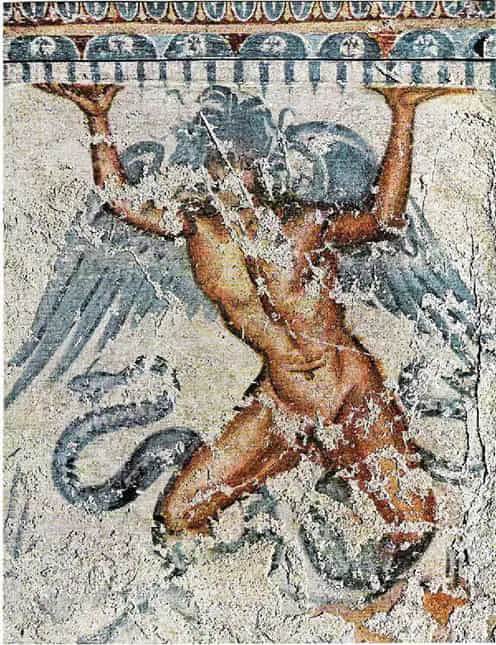
Source: Wikimedia Common
Rome around 600 BC was conquered by numerous Etruscan princes and kings across the Tiber River. The Etruscans believed that the divine power manifested all visible phenomena, and the energy was subdivided into gods and goddesses that directly impacted the human.
Romans inherited the culture, religion, and tradition from the Etruscans during the Period of their rule. They inherited gladiatorial combat, designs of temples, religious rituals, and artistic practices.
The Etruscans were inclined towards rituals, traditions, religious beliefs since the beginning. Most of their rituals and religious aspects were inspired by Greek culture.
They believed in the afterlife and, for that, believed in doing and behaving well to reach a peaceful place in their afterlife. Their belief in the afterlife led them to care for the dead, decorate their tomb, and sacrifice in an elegant manner.
The Etruscan religion had a massive influence on the Roman religions as the Romans continued the culture, tradition, and ritual present when Rome was under the control of the Etruscans.
Romans also were inspired by the religious calendar of the Etruscans. However, Roman was freed from the Etruscans’ control with the rape of a noblewoman – Lucretia by Sextus Tarquinius, son of Etruscan King.
Roman religion in the early Roman Republic
With the beginning of the Early Roman Republic from 509 BC to 27 BC, Rome had transformed into a city-state with many inhabitants belonging to different classes or nations.
Rome was filled in with plebeians, artisans, Sabines, Latins, and people from various nations. These people brought along with different religions, rituals, cultures, and traditions, that led to Rome becoming a polytheistic religion.
Roman Pantheon
Like most ancient nations and empires, the Roman Empire also had numerous deities taken as major deities and minor deities. God Jupiter, God Neptune, and God Pluto was listed as the major deities. In contrast, god Nemesis, god Cupid, god Pax, and goddess Furies were listed as the minor deities.
These deities were the counterpart of Greek deities and deities of Etruscans. For instance – Goddess Venus was the Roman counterpart of the Greek goddess Aphrodite, God Mars – the counterpart of God Ares, Goddess Minerva – the counterpart of the Goddess Athena, and Goddess Vesta- the counterpart of Goddess Hestia.
Likewise, Goddess Juno was the Roman counterpart of Etruscan Goddess Uni, God Jupiter – the counterpart of God Tinia, and Goddess Minerva – Goddess Menrva.
Every Roman God and Roman Goddess was honored for the special association; for instance, Goddess Aurora was the Goddess of Dawn, Goddess Victoria – the Goddess of Victory, Goddess Luna – the Goddess of Moon, God Janus – the God of the beginning, God Mars – the God of war, and God Mercury – the God of Commerce.
Roman Temples
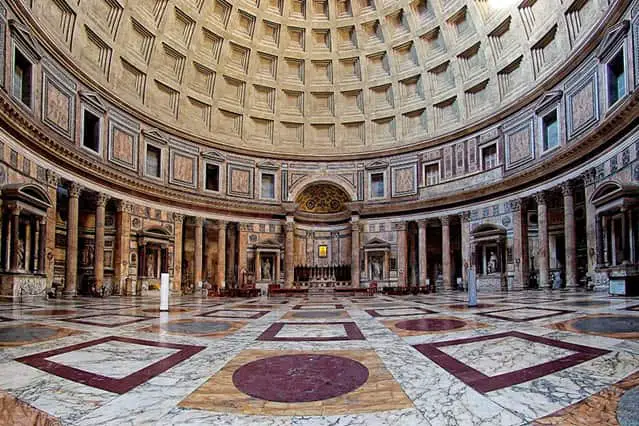
Source: Wikimedia Common
Numerous temples were built to honor roman deities. Every God had one temple assigned to them in almost every city of ancient Rome.
For instance, the Maison Carree was a temple dedicated to Lucius Caesar and Gaius Caesar. Pantheon was built for all the Roman deities. The Temple of Bacchus was for Roman god Bacchus – the God of Wine.
All the temples had similar designs; for instance, the roof had a triangular shape and was supported with great pillars. The inner portion of the temple was fully decorated, and the deity’s statue was placed in the middle.
Roman Religion and Religious practices
One of the oldest civilizations, the Roman Empire was well known in ancient history for its number of deities and cults. The Romans invested most of their time in worshipping their deities, building temples for them, and finding ways to please them.
They celebrated numerous festivals, sacrificed animals, and had belief in oaths and prays. However, they also had a considerable inclination towards superstitious beliefs and the presence of the Numina or the divine power.
The religions and the religious observance of the Romans were unique and were influential to the other Empires of that Era. People believed in the presence of spirits and divine power that had a massive role in their everyday life.
They had their deities, and the oldest three were God Jupiter, Goddess Juno, and Goddess Minvera. They had a significant faith in their religion and practiced numerous religious acts as per their beliefs.
Here is the list of the top 10 Religious practices of Ancient Rome with some details.
10. Numina – the divine presence
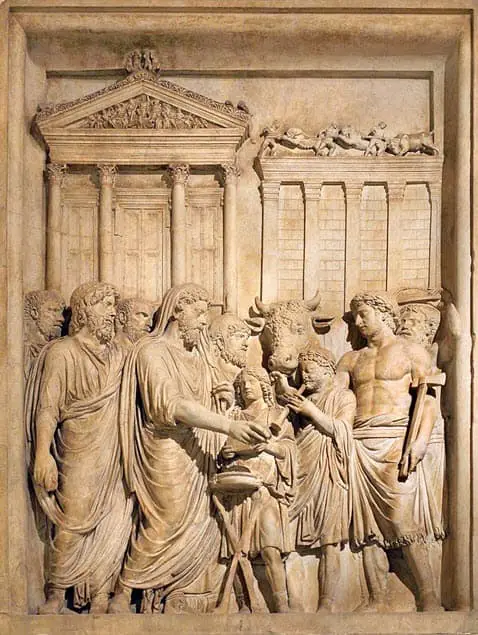
Source: Wikimedia Common
The belief in the presence of divine power and will was the most common religious practice of Romans. They believed that the Numina or the divine power controlled everything ongoing in the universe.
From basic natural things as the flowing of water to the existence of solar or lunar eclipses were thought to have been created due to Numina. They had faith in more than one Numen as a part of the Early Roman culture.
The houses in Ancient Rome were believed to be protected by protective spirits and divine power. For instance, the house’s fireplace was protected by Vesta, the goddess of the fireplace, and the Penates protected the cupboards.
Likewise, Numen was also used to refer to the divine power of a living emperor in the Imperial cult of ancient Rome. People would worship Emperors like a god but would never call them God.
9. Funerals and the Afterlife
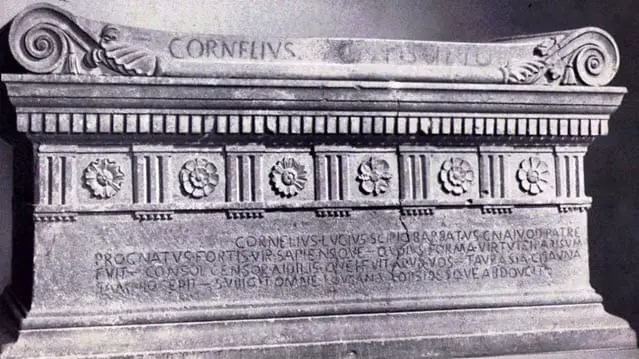
Source: Wikimedia Common
The Romans practiced two significant burial forms from the early days, inhumation and cremation. In inhumation, the Romans buried the dead into the ground by excavating a trench or pit, placing the body on it, and covering it.
The deceased was honored with flowers and was placed a coin on the mouth as per one of the oldest mythologies of Ancient Rome. The coin on the mouth would help the departed to travel from the real world into the underworld. The coin was taken as the fare to travel from one place to the other.
In cremation, the body of the deceased was burnt, and the ashes were placed in urns. The funeral practice was done as per the family’s wish, but the burial became common during the last century of the Republic as compared to inhumation.
However, placing a coin on the mouth of the deceased was practiced in both forms of funerals. The coin was the main element to reach the departed to the underworld and for their easy afterlife.
Though the selection of the funeral procedure was the same for all the classes, the body of a person belonging to the upper class was kept for over a week to be shown to everyone. In contrast, the body of a lower-class person was observed for only a few days before cremating or inhumating.
Both the procedures were performed by the funeral societies known as Collegia. They were paid by the government every month.
8. Sacrifices – Human and Animal
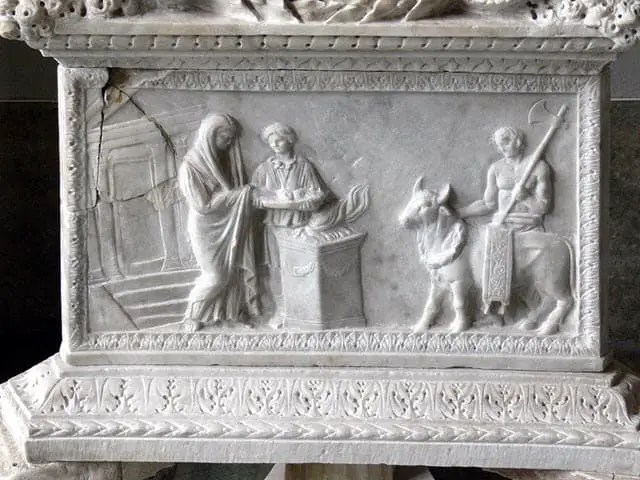
Source: Wikimedia Common
The practice of sacrificing animals for the name of God was and still is common all over the world. However, the Romans were one of the firsts, to begin with this ritual.
They believed that the primary way of pleasing their deities was by sacrificing animals and humans. Specific criteria had to be followed in this process; for instance, the sex of the animals had to be the same as the sex of the deity.
The color of the animals was also distinguished, and white was for gods of the upper world, and blacks were for gods of the underworld. And, the most sacrificed animals were ox, sheep, and pigs.
The human sacrifice, however, was a rare case. Mostly the slaves and the criminals were put to participate in contests and were asked to fight as the gladiatorial arenas’ Roman gladiators.
The fight between slaves or criminals was enjoyed by noblemen, upper-class people, and royal family members. The fight would last until one of the people was dead, and the dead were sacrificed to the deity as per the Roman culture.
7. Prayers, Oaths, and Vows
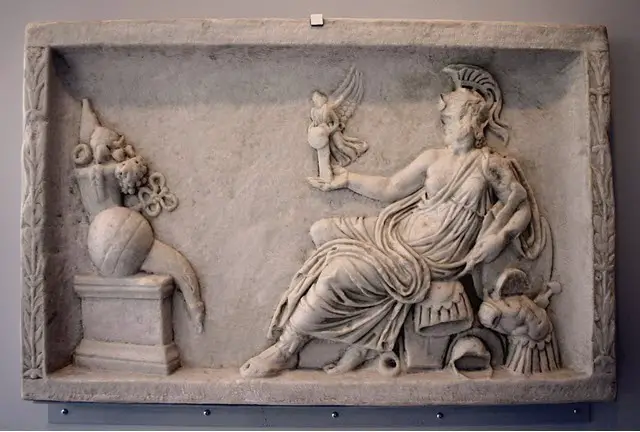
Source: Wikimedia Common
Romans had a strong faith in their deities. They believed everything that was happening was due to the divine power of their deities.
The Romans associated every object with a particular deity and respected that object as they would respect their deities. The deities were worshipped in the form of objects, statues, or monuments.
In temples, the deities were offered animal sacrifices along with precious things. However, the best way, according to the Romans, was through blood sacrifice. They believed that they could communicate perfectly with the gift of blood.
Every deity was honored with a particular oath or a vow along with a sacrifice. A priest led the prominent worship, then followed by the ordinary people.
People prayed in times of grief, happiness, or difficult situations. The prayers had to be done in a proper format, and the whole prayer process had to be re-done in case of any mistake during the prayer. The oath was considered very powerful; if broken, the person was believed to be punished by God.
6. Worship of numerous deities
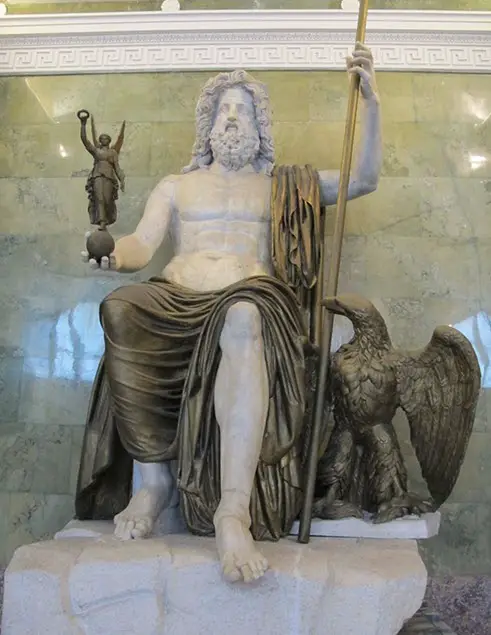
Source: Wikimedia Common
The whole of the Roman Empire was a polytheistic civilization where people worshipped multiple gods and goddesses. The Roman Gods and Roman goddesses were given equal respect and honored equally.
However, the most popular were God Jupiter, Goddess Juno, and Minerva. These three were the oldest deities of ancient Rome.
Each deity had its value and purpose and was associated with some powers and aspects in life. For instance, Roman Goddess Juno was associated with marriage, home, family, Goddess Minerva with wisdom, war, God Bacchus with Wine, Goddess Vesta with hearth, God Mars with War, God Janus with beginnings, and God Apollo with sun and light.
Different cults and temples were built to honor the deities. The cities were also assigned to the deities. Any Emperor working in favor of the Romans was honored, similar to the deity.
5. Religious festivals
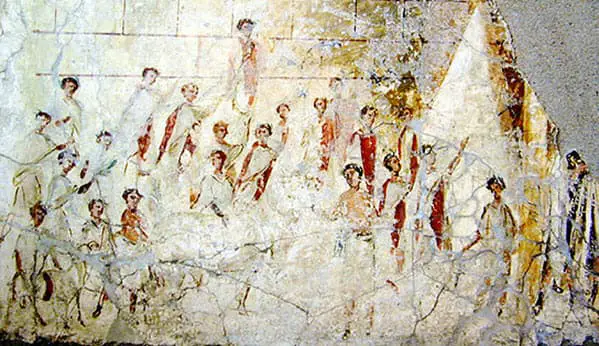
Source: Wikimedia Common
Numerous religious festivals were celebrated in ancient Rome, for instance, Lupercalia, Floralia, Vulcanalia, Adonia, Agonalia, and Saturnalia. All these festivals are celebrated to honor gods and goddesses.
However, the most famous amongst these were Adonia, celebrated in July. During this festival, a female house member climbed on the roof and planted the Garden of Adonis. She would look after the plant regularly and make sure it grew well.
Agonalia was celebrated on January 1 and 9, where people offered dates, figs, honey to God Janus and distributed them to family members.
Floralia was celebrated on 27th April, where temples were covered with flowers and people with floral wreaths in their hair. It was observed for six days with series of games organized to please the goddess.
The businesses and offices were closed down during these festivals as all the Romans were to participate. Animals were sacrificed, meat was offered to everyone, and blood was presented to the deities.
4. Inspiration from Greek deities

Source: Wikimedia Common
Numerous deities of ancient Greek influenced the Roman religion, and as a result, the names of those deities were changed and kept as the counterpart of their faith.
The first Greek Gods to be adopted by the Romans were the twin gods Polydeuces and Castor. They were adopted in around 484 BC, and since then, the number of adoption of Greek Deities by the Romans has been increasing rapidly.
Other significant deities that have been inspired and made the counterpart include Venus inspired by Aphrodite – goddess of love, Neptune – the God of sea-inspired by Poseidon, God Jupiter was adopted from God Zeus, Goddess Juno from Greek Goddess Hera, Mercury from Hermes, Dian from Goddess Artemis, Ceres from Demeter, and Minerva from Athena
However, the depiction and the statues were made differently though their association and value remained the same. The Romans used marbles, whereas Greeks used bronze.
3. Judaism and Christianity
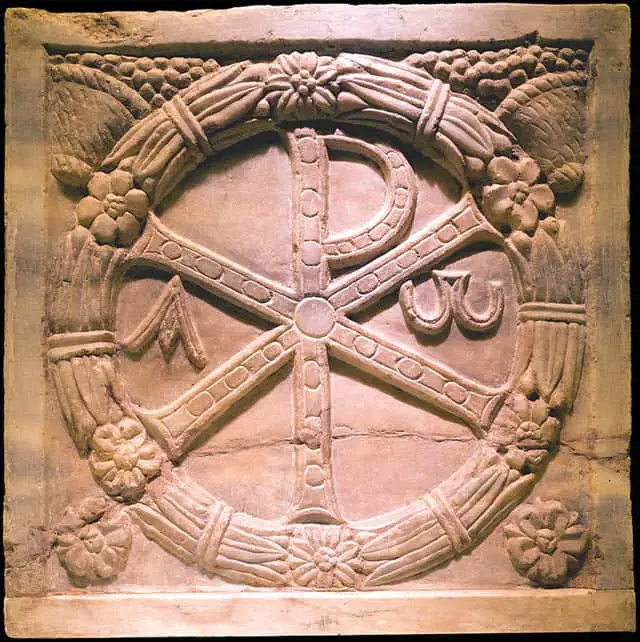
Source: Wikimedia Common
Christianity was introduced in ancient Rome in 313 AD with the issue of the Edict of Milan by Emperor Constantine. The Edict was the proclamation that brought in permanent religious tolerance for Christianity in ancient Rome.
However, Christianity became the official religion only after ten years of the Edict of Milan. Numerous Christians were tortured and exiled during this period.
The Romans were against Christianity as they worshipped only one God instead of many. The difference in the number of worshipped deities led to riots, chaos, torture, exile, and killings of thousands of Christians.
On the other hand, Judaism was introduced around 63 BCE. The Jews were allowed to worship freely but were never left out of suspicion.
2. Superstitions

Source: Wikimedia Common
Ancient Rome and its Era is known for its mythologies and legends that include numerous beliefs in superstitions. Romans acted according to their belief and omens for their lucks.
For instance, if a woman combed her hair with the spear of a recently dead man, she would be lucky. Whereas, crow entering the house with the left foot first or a black cat entering the house was a stroke of bad luck.
A simple action such as getting up from the left side was taken as a sign of bad luck while getting up from the right side of the bed was good luck. Even left-handed people are considered unlucky and untrustworthy.
People were blessed with the word “Bona Salus” after they sneezed. Some diseases as headaches were believed to be cured by having a herb growing near the heads of statues and then wrapping it around the neck of a sick person.
Likewise, they believed that each of the twelves Zodiac had something to do with different body parts, each one controlled a particular part of the body.
1. Temples and Shrines
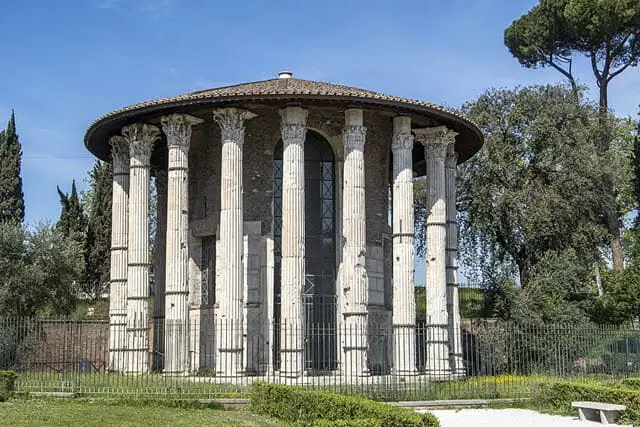
Source: Wikimedia Common
Ancient Era was known to people for the architectural designs, especially the Roman architecture and its engineering skills. Romans had complete faith in deities and gave their cent percent in designing and building temples for their deities.
The temples were built in unique, versatile designs with expensive marbles and stone. Initially, the temples were built using concrete and brick and furnished with marble and stone.
At least one temple was dedicated to one deity, and they had their cella and icon with a unique depiction on their statues.
Some deities had cults and temples built in numerous cities as per the number of worshippers and followers. The most famous temples of Ancient Rome include the Temple of Garni, Palmyra, the Temple of Augustus and Livia, and Maison Carree.
